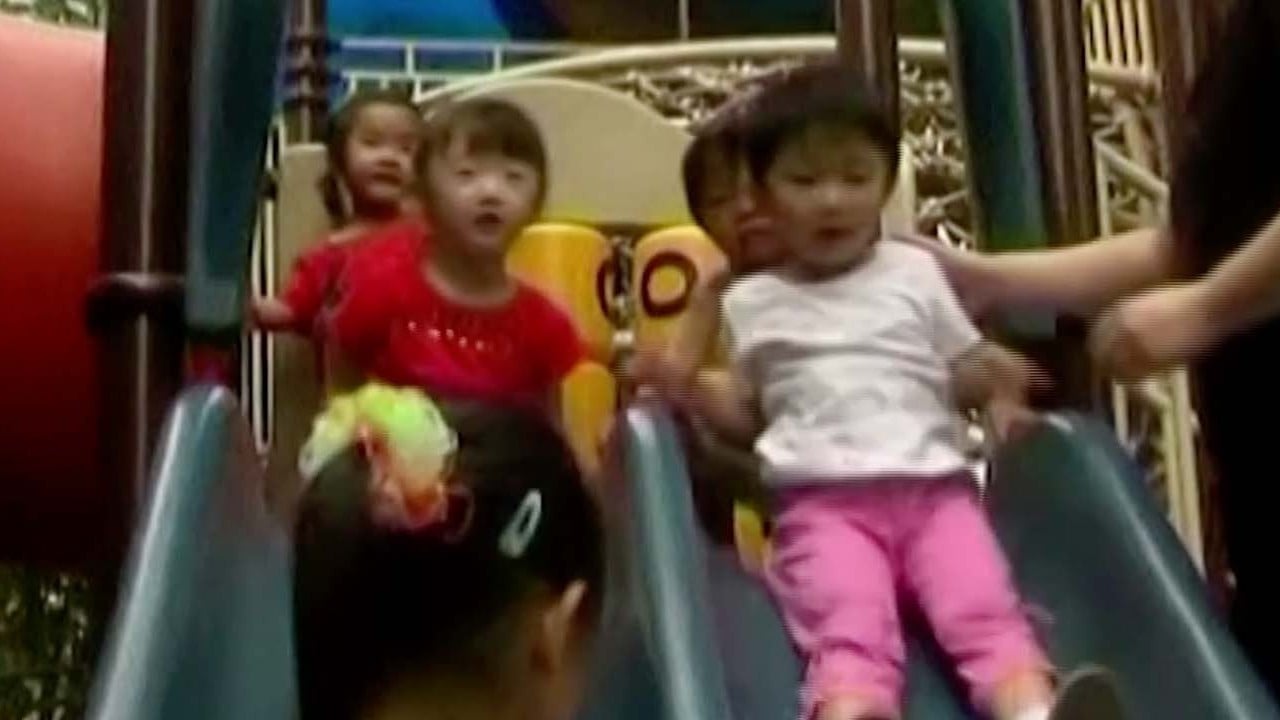
China’s population is ageing rapidly, but is it ready to care for the elderly?
- In 2020, 36.6 million Chinese were aged over 80, but that figure is expected to rise to 159 million by 2050, says Chinese economist Ren Zeping
- Elderly care centres are on the frontline of China’s demographic crisis, but many are struggling financially and short of skilled carers
Young entrepreneur Chen Yingbing thought she had settled on a winning business model caring for China’s fast-ageing population.
But not long after opening her high-end elderly care centre in the northern city of Tianjin, she encountered a major problem: the coronavirus pandemic.
Under China’s hardline zero-Covid rules, elderly care homes were sealed off to prevent outbreaks and even nursing staff could not move about freely.
“The elderly could not freely come and go, they needed to be tested when they came back from hospital and their families were not allowed to visit. As a result, the elderly clientele decreased a lot,” said 35-year-old Chen, whose care centre currently has a 30 per cent occupancy rate.
While Tianjin’s rent waiver for elderly care homes has relieved some pressure, she is now grappling with a shortage of young nursing staff.
7 takeaways from China’s 2022 population figures
“A 50-year-old carer is already considered young here, and more are close to 60,” she said. “The chances of young people choosing this profession are not high as it means a lot of hardship.”
Since 2021, Chen’s centre has been a practical training base for students studying elderly care at a local vocational school, a new subject introduced by Beijing three years ago in response to the country’s fast-ageing population.
Young staff, who are often highly educated with good technical skills, were particularly good at chatting and playing games with elderly patients with Alzheimer’s, she said.
Chen’s problems reflect a broader predicament for China as its population ages and its workforce shrinks; the country’s unbalanced demographic makeup, caused by its former one-child policy and slowing fertility rate, could soon mean there are not enough young people to care for the elderly.
Last year, 209.78 million Chinese were 65 or older, representing 14.85 per cent of the population, up from 200 million in 2021, according to census data.
In 2020, 36.6 million Chinese were aged over 80, but that figure is expected to rise to 159 million by 2050, meaning elderly care will soon become a serious issue, according to a report released in February by Chinese economist Ren Zeping.
China’s elderly dependency ratio, which reflects the population aged 65 years or over to the population aged 15–64, was 20.8 per cent in 2021. It is expected to exceed 50 per cent by 2050, according to Ren’s report.
The world’s second-largest economy is losing its demographic dividend and strain is growing on the elderly care sector and the country’s pension fund.
In the United States and Britain, elderly care has turned into big business, but private companies in China do not seem to be particularly interested despite the huge market, said Ren.
‘There are no children’: China’s kindergartens confront population crisis
“[China’s] pensions have a low degree of market-based investment and operation, with less than 20 per cent of the volume of funds entering the market, a large amount of pensions can only be invested in government bonds or bank term deposits,” Ren said.
The poor profitability of most Chinese elderly care centres has a direct impact on the sustainability of the sector, Gao Huajun, executive director of the China Philanthropy Research Institution at Beijing Normal University, said at a conference on February 13.
“[China’s] business-type elderly care centres have seen negative profits for many years,” Gao said.
China’s elderly care centres were hit hard by the three-year pandemic, forcing the government to introduce subsidies, rent waivers and other relief measures.
“It’s fair to say that without these measures, it’s possible that elderly care centres, especially private ones, might have collapsed even further,” he said.
Still, China is seeing an increase in the number of profit-driven elderly care centres, with nearly 40-fold growth from 2013-20, according to Gao.
“The biggest problem with China’s ageing is that the middle class has no medical care after they become disabled when older. They lack people to look after them,” said Gao.
“They seem to earn largely above average and even have some advantageous social resources, but they may not yet enjoy the treatment of the most ordinary citizens of developed countries in the elderly care industry.”
In its 14th five-year plan for 2021-25, Beijing encouraged construction of more elderly care centres and large-scale training of nursing staff.
But there is a lot of ground to make up. According to the Ministry of Civil Affairs in 2021, China is in need of at least 2 million nursing staff, excluding those working in home care services.
Young Chinese ‘can’t wrap head around starting a family’ as burdens pile up
In the elderly care sector, the proportion of workers aged 36-45 is also falling steadily, while the ratio of 46-55 year olds is rising significantly, according to Gao’s research on Chinese nursing homes.
China’s care centres can only meet the needs of one-fifth of the estimated 40 million plus disabled elderly in the country, Gao said.
Furthermore, only 600 million yuan of the 37 billion yuan available for elderly care in 2018 was spent on elderly with disabilities, he added.
Japan, which is also struggling with a low birth rate and ageing population, is innovating to ensure their elderly are cared for in the decades ahead.
Hi-tech aids, such as more than 4,000 types of special chopsticks and more than 3,000 types of wheelchairs, have been developed to meet the needs of the disabled elderly, Gao said.
“We still have a long way to go to be able to keep up with development in this area, imported Japanese hi-tech aids for the elderly are snapped up as soon as they enter Shanghai’s free-trade zone,” Gao said.
The National Health Commission once used the term “9073” to describe elderly care in China, which means about 90 per cent are staying at home, about 7 per cent are relying on the community and 3 per cent are staying in care centres.
“The problem with China’s elderly market is that the needs of the elderly have been suppressed, and these hidden needs demand the market to exploit,” Gao said.




